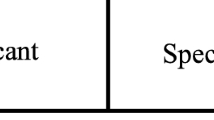Abstract
Spectrum detecting is the essential and crucial mechanisms of cognitive radio (CR) to the invention the unemployed spectrum. CR system has been suggested as a conceivable resolution for enhancing the spectrum use by empowering unprincipled spectrum sharing. The principal prerequisite for enabling CR to utilize authorized range on an optional premise is not making interfering to primary users. The principal goal of CR is to use rare and limited natural resource efficiently with no obstruction to the primary users (PUs). This work presents an overview of CR architecture, discusses the characteristics and benefits of a CR. Energy identification, matched channel filter detection, and cyclostationary recognitions are most conventional techniques for spectrum sensing. The explanation behind picking energy detection procedure, it did not need any previous info from the primary user transmission. Additionally, the particular result of energy detection technique corrupts with a lower sign to noise ratio (SNR) level signal area. General detection performance of energy detection exceptionally depends upon noise, mainly while the SNR is low for PU. To consider this issue, this paper shows a remarkable, augmented threshold model for efficient energy detection procedure to improve the detection execution at low SNR level. The simulation results demonstrate the energy detection performance utilizing proposed system model is excellent than a fixed threshold at low SNR signal areas.









Similar content being viewed by others
Change history
21 December 2022
This article has been retracted. Please see the Retraction Notice for more detail: https://doi.org/10.1007/s10586-022-03936-1
References
Youssef, M., Ibrahim, M., Abdelatif, M., Chen, L., Vasilakos, A.: Routing metrics of cognitive radio networks: a survey. IEEE Commun. Surv. Tutor. 99, 1–18 (2013)
Abdelaziz, A., ElNainay, M.: Metric-based taxonomy of routing protocols for cognitive radio ad hoc networks. J. Netw. Comput. Appl. 40, 151–163 (2013)
Beltagy, I., Youssef, M., El-Derini, M.: A new routing metric and protocol for multipath routing in cognitive networks. In: IEEE Wireless Communications and Networking Conference (WCNC) pp. 974–979 (2011)
Karmoose, M., Habak, K., ElNainay, M., Youssef, M.: Dead zone penetration protocol for cognitive radio networks. In: 2013 IEEE 9th International Conference on Wireless and Mobile Computing, Networking and Communications (WiMob), pp. 529–536 (2013)
Chowdhury, K.R., DiFelice, M., Akyildiz, I.F.: Tp-Krahn: a transport protocol for cognitive radio ad-hoc networks. IEEE INFOCOM 2009, 2482–2490 (2009)
Srivastava, V., Motani, M.: Cross-layer design: a survey and the road ahead. IEEE Commun. Mag. 43(12), 112–119 (2005)
Bianchi, G.: Performance analysis of the IEEE 802.11 distributed coordination function. IEEE J. Select. Areas Commun. 18(3), 535–547 (2000)
Mitra, S., Jana, B., Poray, J.: A novel scheme to detect and remove black hole attack in cognitive radio vehicular ad hoc networks(CR-VANETs). In: Computer, Electrical & Communication Engineering (ICCECE) (2016)
Li, B., Li, D., Wu, Q., Li, H.: ASAR: ant-based spectrum aware routing for cognitive radio networks. In: International Conference on Wireless Communications Signal Processing, 2009. WCSP’09, pp. 1–5 (2009)
Chowdhury, K.R., Felice, M.D.: Search: a routing protocol for mobile cognitive radio ad-hoc networks. Comput. Commun. 32(18), 1983–1997 (2009)
Chowdhury, K.R., Di Felice, M.: SEARCH: a routing protocol for mobile cognitive radio ad-hoc networks. In: IEEE Fu Sarnoff Symposium. SARNOFF ’09, pp 1–6 (2009)
Chowdhury, K.R., Akyildiz, I.F.: CRP: a routing protocol for cognitive radio ad hoc net-works. IEEE J. Select. Areas Commun. 29(4), 794–804 (2011)
Caleffi, M., Akyildiz, I.F., Paura, L.: OPERA: optimal routing metric for cognitive radio ad hoc networks. IEEE Trans. Wirel. Commun. 11(8), 2884–2894 (2012)
Dijkstra, E.W.: A note on two problems in connexion with graphs. Numer. Math. 1(1), 269–271 (1959)
Bellman, R., Ford, L.: On a routing problem. Q Appl. Math. 1, 87–90 (1958)
Huang, X.X., Lu, D., Li, P., Fang, Y.: Coolest path: spectrum mobility aware routing metrics in cognitive ad hoc networks. In: 2013 1st International Conference on Fu Distributed Computing Systems (ICDCS), pp. 182–191 (2011)
loannis Pefkianakis, I., Wong, S.H.Y., Lu, Songwu: Samer: Spectrum aware mesh routing in cognitive radio networks. In: 3rd IEEE Symposium on Fu New Frontiers in Dynamic Spectrum Access Networks, 2008. DySPAN, pp. 1–5 (2008)
Sampath, A., Yang, L., Cao, L., Zheng, H., Zhao, B.Y.: High throughput spectrum-aware routing for cognitive radio networks. In: Fu Proc. of International Conference on Cognitive Radio Oriented Wireless Networks and Communications (crown-com) (2007)
Cacciapuoti, A.S., Calcagno, C., Caleffi, M., Paura, L.: CAODV: routing in mobile ad-hoc cognitive radio networks. In: Fu Wireless Days (WD), 2010 IFIP, pp. 1–5 (2010)
Wang, X., Peng, T., Wang, W.: Low-SNR energy detection based on relevance in power density spectrum. In: Proceedings of the 2016 International Conference on Communications, Signal Processing, and Systems
Cacciapuoti, A.S., Caleffi, M., Paura, L.: Reactive routing for mobile cognitive radio ad hoc networks. Ad Hoc Netw. 10(5), 803–815 (2012)
Chatterjee, S., Banerjee, A., Acharya, T., Maity, S.P.: Fuzzy C-Means Clustering in Energy Detection for Cooperative Spectrum Sensing in Cognitive Radio System. Springer International Publishing, Switzerland (2014)
Bogale, T.E., Vandendorpe, L., Le, L.B.: Sensing throughput tradeoff for cognitive radio networks with noise variance uncertainty. In: Cognitive Radio Oriented Wireless Networks and Communications (CROWNCOM) (2014)
So, J., Srikant, R.: Improving channel utilization via cooperative spectrum sensing with opportunistic feedback in cognitive radio networks. IEEE Commun. Lett. 19(6), 1065–1068 (2015)
Doddavenkatappa, M., Chan, M.C., Ananda, A.L.: A dual-radio framework for MAC protocol implementation in wireless sensor networks. In: 2011 IEEE International Conference Communications (ICC)
Author information
Authors and Affiliations
Corresponding author
Additional information
This article has been retracted. Please see the retraction notice for more detail: https://doi.org/10.1007/s10586-022-03936-1
Rights and permissions
Springer Nature or its licensor (e.g. a society or other partner) holds exclusive rights to this article under a publishing agreement with the author(s) or other rightsholder(s); author self-archiving of the accepted manuscript version of this article is solely governed by the terms of such publishing agreement and applicable law.
About this article
Cite this article
Sarala, B., Devi, D.R. & Bhargava, D.S. RETRACTED ARTICLE: Classical energy detection method for spectrum detecting in cognitive radio networks by using robust augmented threshold technique. Cluster Comput 22 (Suppl 5), 11109–11118 (2019). https://doi.org/10.1007/s10586-017-1311-8
Received:
Revised:
Accepted:
Published:
Issue Date:
DOI: https://doi.org/10.1007/s10586-017-1311-8




